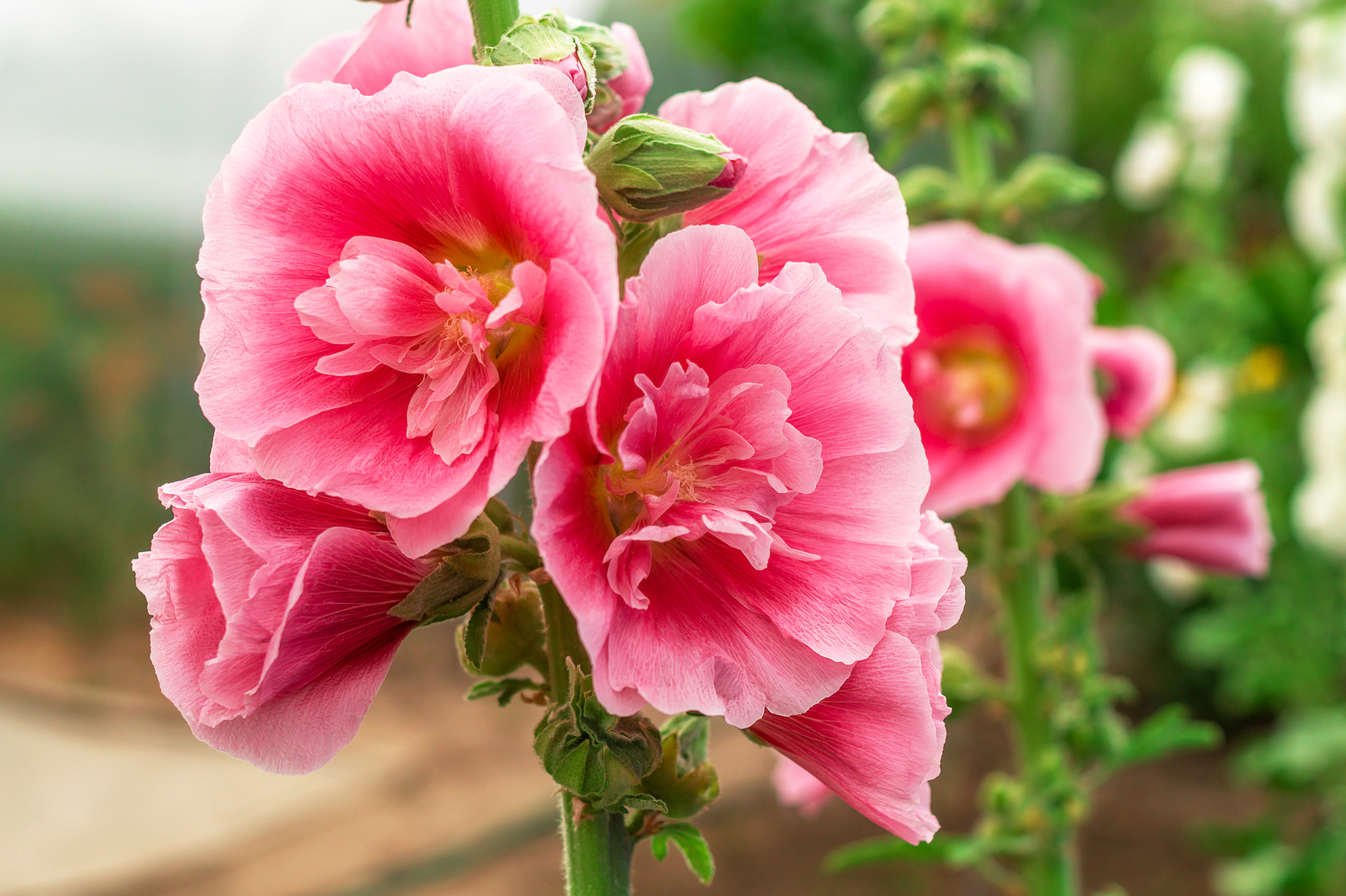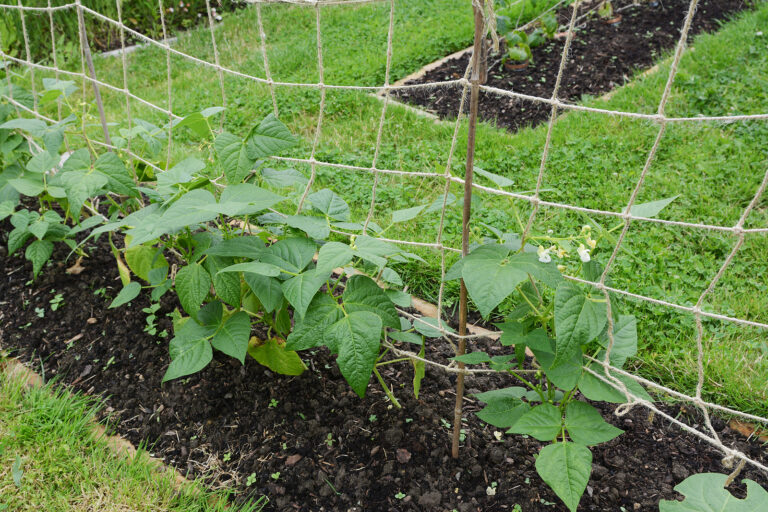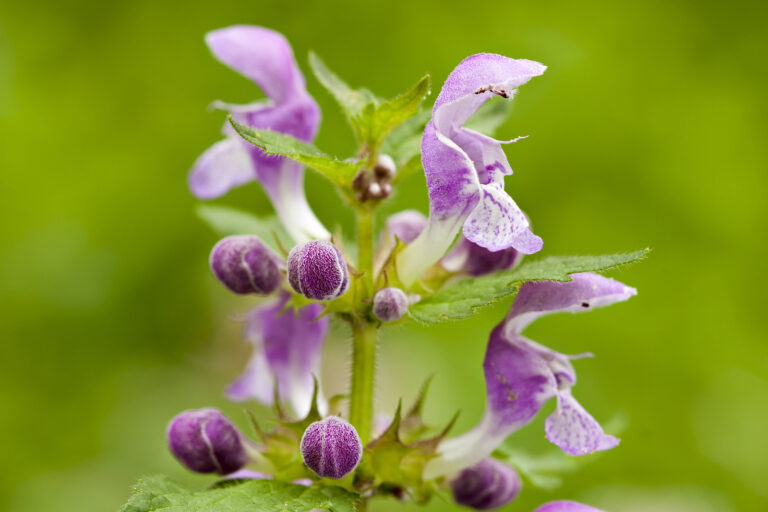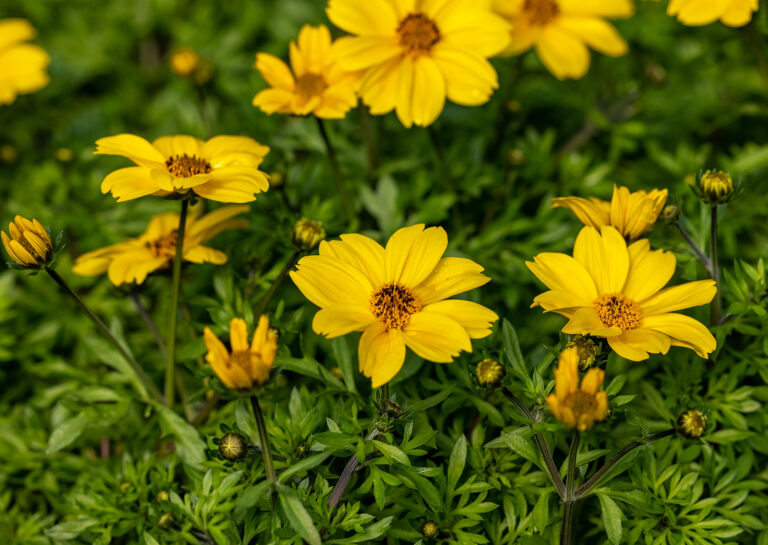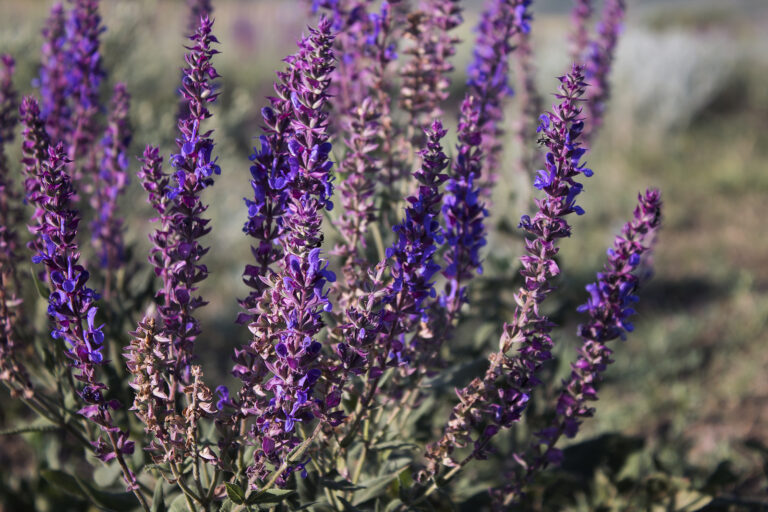How to Grow Hollyhocks — Alcea Rosea
Alcea rosea–commonly called hollyhocks–is a colorful, long-time garden favorite often associated with the back of borders or cottage gardens. Some cultivars grow to 8 feet (2.4m) tall or taller with white, pink, rose, or yellow flowers 6 inches (15cm) across.
Hollyhock flowers resemble hibiscus. They open in progression from the bottom up. A foot or two of the stem can be covered with blooms at any one time from summer through fall. Flowers may be single, semi-double, or double.
Hollyhocks are biennial or short-lived perennials. Some biennials such as the cultivars ‘Summer Carnival’ and ‘Majorette’ can be treated as annuals if they bloom the first year
Hollyhocks are an old-time favorite garden plant. Grow them against a fence or wall or at the back of a border.

Get to know Hollyhocks — Alcea Rosea
- Plant type: Perennial grown as an annual or biennial; short-lived perennial depending on average low temperatures in the region.
- Growing Zones and range: 3-11
- Hardiness: Annual in cold winter regions; short-lived perennial in warm-winter regions; killed by heat.
- Height and width: 3 to 6 feet (90-180cm) tall and 1 to 2 feet wide
- Form: Large clumps of rounded leaves and thick bloom stalks
- Flower form: Plump flower bus produce bowl-shaped blooms–single, semi-double, or double flowers 3 to 5 inches (12.5cm) wide; blooms with crinkled petals can be white, pink, rose, red, purple, creamy yellow, or apricot.
- Flower colors: White, pink, rose, red, purple, creamy yellow, apricot
- Bloom time: Spring in warm climates; midsummer in cool climates
- Uses: Excellent vertical accent; rabbit resistant
- Garden companions: Purple coneflower, black-eyed Susan, and sunflower.
- Common name: Hollyhock, malva
- Botanical name: Alcea rosea, sometimes listed as Althaea rosea
- Family: Malvaceae
- Origin: Temperate regions of Europe and Asia
Where to plant Hollyhocks — Alcea Rosea
- Grow hollyhocks in full sun or partial shade in very warm regions.
- Plant hollyhocks in average to rich, well-drained soil. Add aged compost to the planting bed before setting hollyhocks out.
- Plant hollyhock at the rear of a mixed border or as an accent plant against a fence or wall.
- Hollyhocks prefer a soil pH of 6.0 to 8.0.
Alcea Rosea — Hollyhock uses
- Plant against a fence or wall or at the back of a border.
When to plant Hollyhocks — Alcea Rosea
- Sow seed indoors in winter to early spring for summer bloom
- Start hollyhocks indoors from seed in Zones 3 to 8. Sow seed 2 to 4 weeks before the last average frost date.
- In Zones 9 to 11, start plants in the fall and treat them like biennials.
- Set seedlings in the garden a week or two after the last frost.
- Sow hollyhock seed directly or set out seedlings in the garden after the last spring frost.
- Set out plants, or sow seeds directly as soon as the soil has warmed in spring. Direct-seeded plants may not bloom until the following year.
- Sow seed in late summer or set out seedlings in the fall in Zones 9 to 11 for spring blooms.
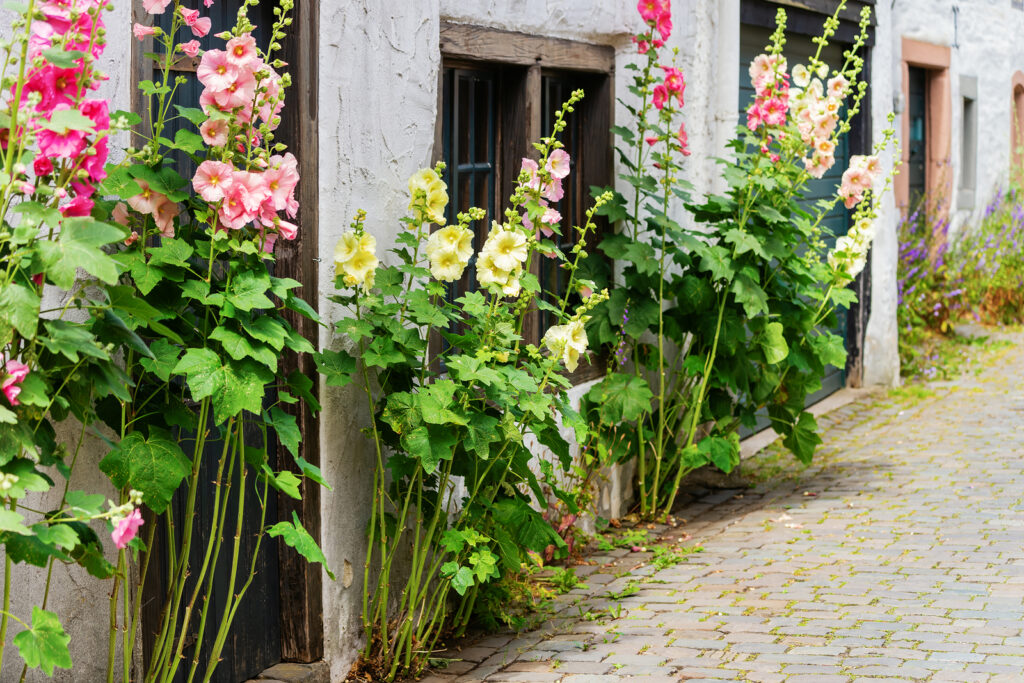
Planting and spacing Hollyhocks — Alcea Rosea
- Sow seeds 1/4 inch deep. Indoors, sow seed one per pot. Seeds germinate in about 10 days and grow quickly.
- Sow seeds outdoors in beds in spring or summer; space seeds 3 inches (7.6cm) apart.
- Thin or transplant seedlings when they are several inches tall.
- Set plants in the garden where they will grow; space plants 12 to 24 inches (30-61cm) apart
Watering and feeding Hollyhocks
- Water hollyhocks frequently to keep the soil just moist; the soil can be somewhat drier in summer.
- Fertilize plants at planting time and feed them every 4 or 5 weeks throughout their growth. Topdress beds with compost or leaf mold each fall.
- Mulch hollyhocks to prevent splashing soil which could transfer fungal diseases. Remove rust-infected leaves immediately.
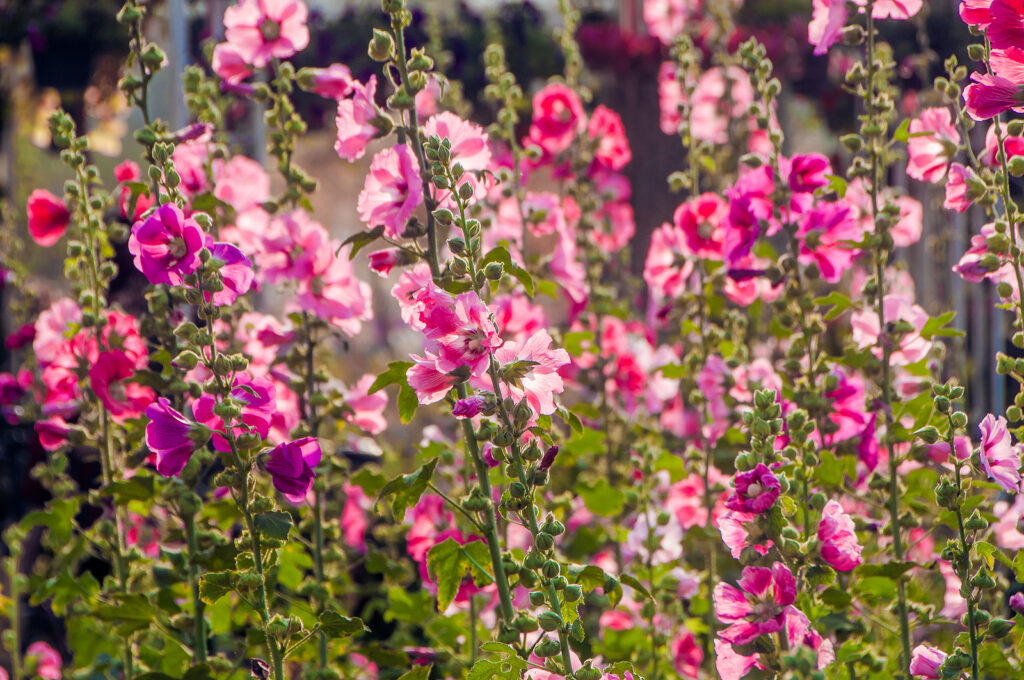
Hollyhock — Alcea Rosea care
- Stake tall hollyhocks to keep plants upright.
- After the first blooms fade, cut the stalks just above the ground; continue to feed and water plants to encourage late summer or early fall rebloom.
- Remove stalks after blooming is finished unless you want to save the seed.
- Mulch around plants to prevent soil-borne diseases.
- Protect plants in winter by mulching 2 inches (5cm) of chopped leaves.
Hollyhock — Alcea Rosea pests and diseases
- Hollyhocks are prone to rust, a fungal disease. Spray with a fungicide. Pull plants that are seriously infected.
- Hollyhocks can be attacked by Japanese beetles. Watch for slugs and snails.
Hollyhock — Alcea Rosea propagation
- Sow seeds in spring or early summer. Some varieties bloom the first year from seeds own outdoors in spring.
- Germination takes about 9 days at 55°F (13°C). Set out plants, or sow seeds directly as soon as the soil has warmed in spring. Direct-seeded plants may not bloom until the following year.
- Plants often self-sow.
- Divide roots of large clumps every other year in spring. Replant division immediately.
- Side shoots can be separated and rooted.
Hollyhock — Alcea Rosea cultivars to grow
- ‘Chater’s Double’ is a perennial strain that has double flowers in maroon, red, rose, white, or yellow.
- ‘Nigra’ is a single-flowered, deep maroon cultivar; that grows to 5 feet.
- ‘Summer Carnival’ blooms from seed sown in early spring and has double flowers.
- ‘Majorette’ grows just 2½ feet tall.
Hollyhocks frequently asked questions
Q: Are hollyhocks biennials or perennials? My bloom every year.
A: Hollyhocks are biennials, but they reseed readily and grow anew for a number of years.
Q: What growing conditions are best for hollyhocks?
A: Plant hollyhocks in full sun and deeply dug, humus-rich soil. They will do best if planted near a wall, fence, or building where they are protected from the wind.
Q: What causes hollyhock foliage to get rust, turn yellow, and drop?
A: What you describe is the fungal disease rust. Fungus spores are produced in little reddish pustules on the undersides of leaves, while yellow areas appear on the upper surface. A bad case of rust will cause leaves to yellow, wither, and drop. Remove infected leaves as soon as possible. Clean up dropped leaves. Dust the plant with sulfur in early spring. Be sure to coat the undersurface of leaves as well.

